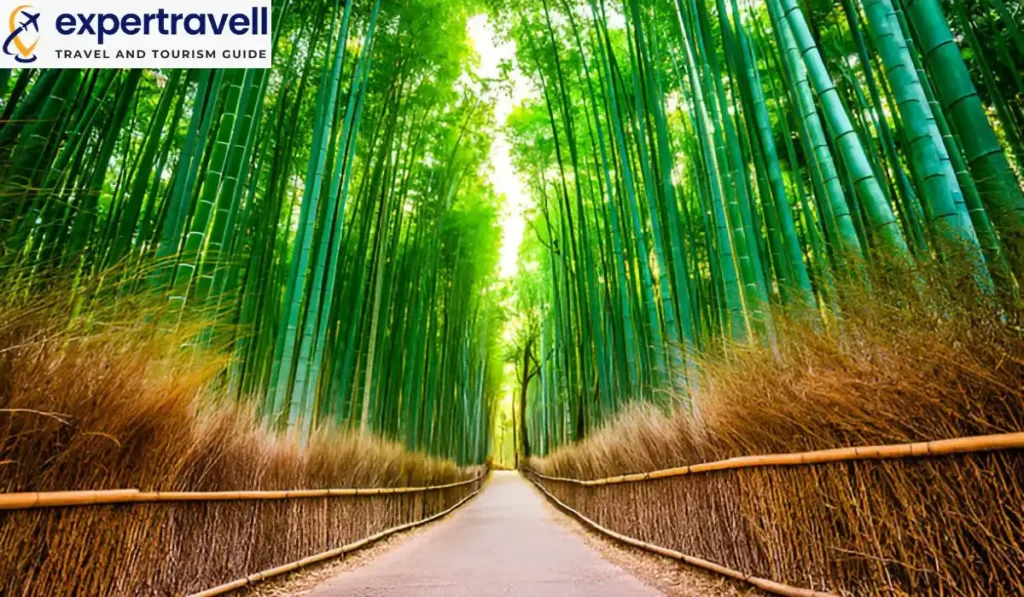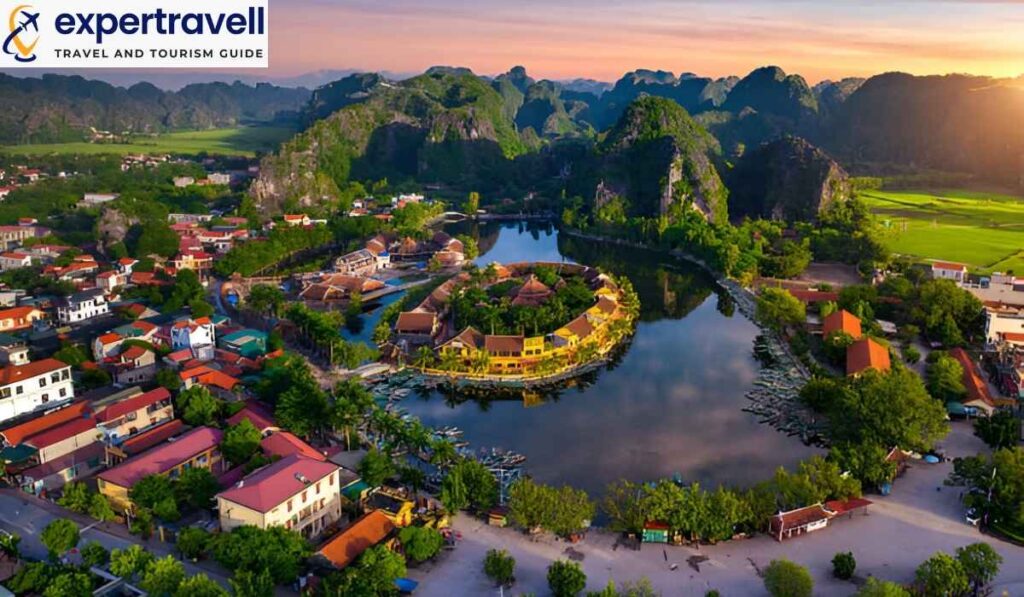The Arashiyama Bamboo Grove is a top attraction in Kyoto, Japan. This stunning forest draws visitors from all over the world. Tall green stalks reach high into the sky, creating a magical atmosphere.
The bamboo grove is free to visit and open 24 hours a day, making it easy to add to any Kyoto itinerary. Many people come early in the morning to avoid crowds and get the best photos. The light filtering through the bamboo creates a special glow at this time.
The bamboo forest is just one part of the Arashiyama district. This area offers many other sights like temples, shrines, and scenic river views. Visitors can spend a full day exploring Arashiyama’s natural beauty and cultural spots, and for those looking to experience more iconic landmarks, a visit to Fushimi Inari-taisha is highly recommended.
How To Get To Arashiyama Bamboo Forest
Reaching the famous Arashiyama Bamboo Forest from Kyoto is straightforward and offers several options. Visitors can choose between trains, buses, or taxis depending on their preferences and budget.
Transportation Options From Kyoto
The most popular way to get to Arashiyama Bamboo Forest is by train. Travelers can take the JR Sagano line train from Kyoto Station directly to Saga-Arashiyama Station. This journey takes about 25 minutes and costs 240 yen. For those with a Japan Rail Pass, this trip is covered. From Saga-Arashiyama Station, it’s a 15-minute walk to the bamboo forest entrance. Another option is taking a bus from Kyoto Station to Arashiyama. While slower, it can be more scenic and costs around 230 yen. Taxis provide a more comfortable but pricier alternative. The ride takes about 30 minutes, depending on traffic.
Tips For A Smooth Trip
Planning is key for a successful Arashiyama day trip. Arrive early, preferably before 9:00 AM, to avoid crowds and get the best photos. Check train schedules in advance to maximize time at the forest. The bamboo grove is open 24/7 and free to enter. Wear comfortable shoes for walking. The area around the forest has uneven paths. Consider visiting nearby attractions like the Tenryu-ji Temple or taking a boat ride on the Hozugawa River to make the most of the trip. Pack light snacks and water, as food options near the forest can be limited and expensive.
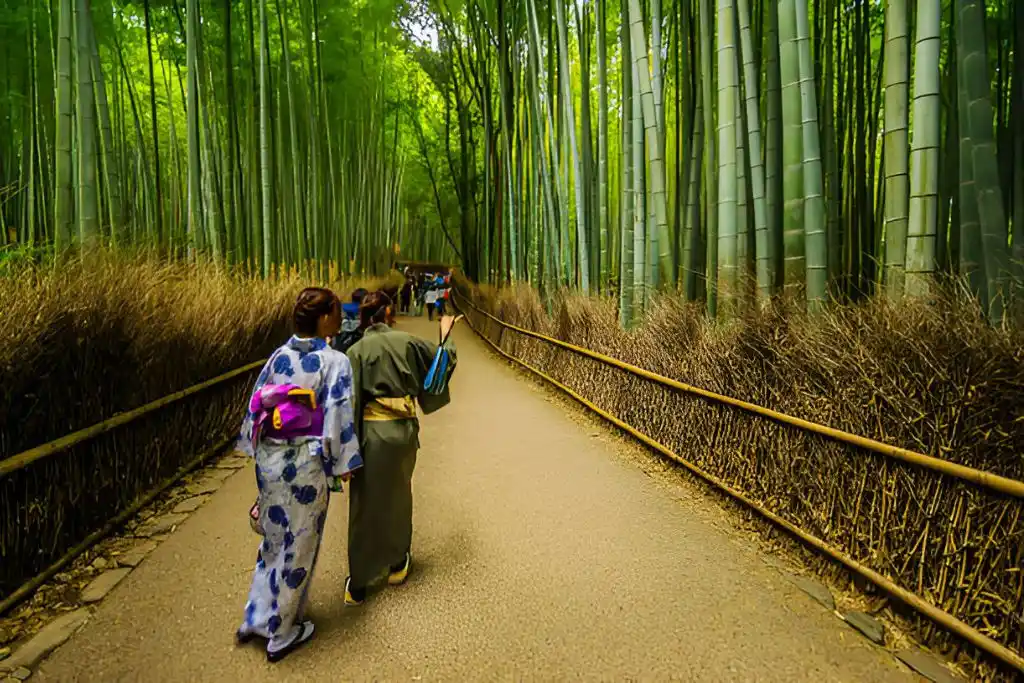
Best Time To Visit Arashiyama Bamboo Forest
Timing is key when visiting the Arashiyama Bamboo Forest. The right season and time of day can make a big difference in the experience.
Exploring The Forest In Different Seasons
Spring brings mild temperatures and cherry blossoms to Arashiyama. The forest looks vibrant with fresh green bamboo shoots. Summer can be hot and humid. The dense bamboo provides shade, but it can get crowded. Fall is a popular time to visit. The surrounding hills show gorgeous fall colors, creating a stunning backdrop for the bamboo. Winter offers a quieter experience. The bamboo stands out against gray skies, and there’s a chance to see the forest dusted with snow.
Time Of Day Recommendations
Early morning is the best time to visit. Arriving right after sunrise offers a peaceful atmosphere with fewer people. By 8:30 AM, larger crowds start to arrive. The forest gets busier throughout the day. Late afternoon can be a good alternative. The crowds thin out as tour groups leave. The bamboo grove is open 24/7, allowing for night visits. This offers a unique, mysterious atmosphere but requires caution due to limited lighting.
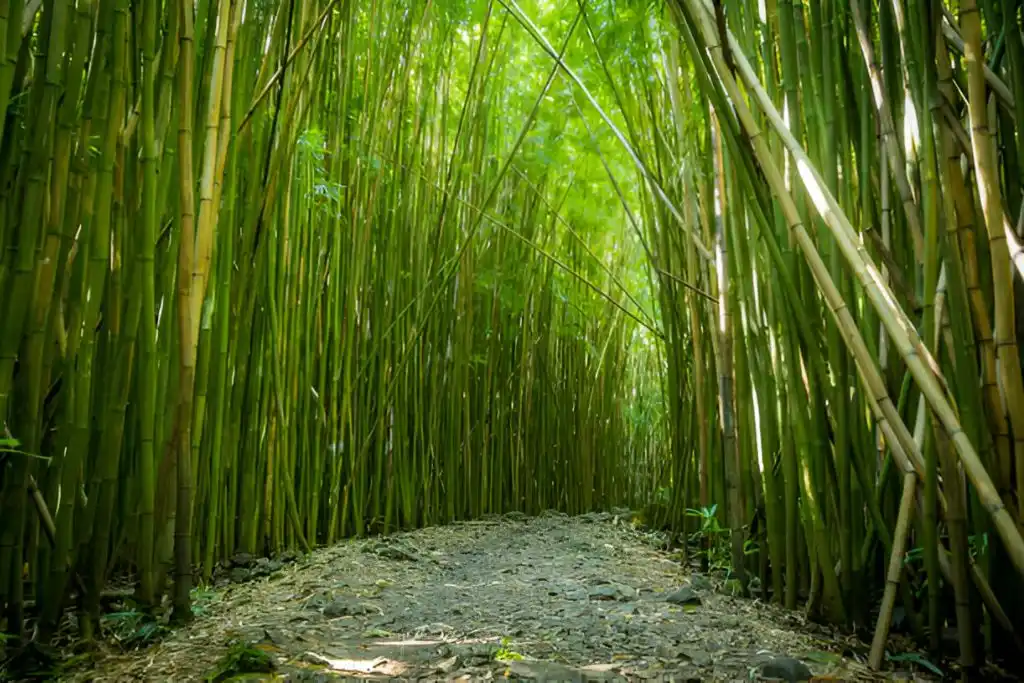
Exploring The Bamboo Groves
The Arashiyama bamboo grove offers a unique and serene experience for visitors. Walking through the towering bamboo stalks provides a sensory journey and photographic opportunities unlike any other natural setting.
What To Expect During Your Walk
The Arashiyama bamboo grove spans about 500 meters in length and 140 meters in width. Visitors walk along a paved path that winds through dense stands of bamboo reaching up to 30 meters tall. The main walkway is wheelchair accessible. Side paths branch off, allowing for exploration of quieter areas. Early morning or late afternoon visits often mean fewer crowds. The grove is open 24 hours a day with no admission fee. Nearby attractions include Tenryu-ji Temple and the Togetsukyo Bridge. Many visitors combine these sights with their bamboo forest walk.
Sensory Experience
Walking through the bamboo forest engages all the senses. The towering green stalks create a natural canopy overhead, filtering sunlight into dappled patterns on the ground. A gentle breeze causes the bamboo to sway and rustle. This creates a soothing natural soundtrack unique to bamboo groves. The air feels cooler and fresher inside the grove. The dense bamboo acts as a natural air purifier. Touching the smooth bamboo stalks reveals their surprising strength and flexibility. This hands-on experience helps visitors appreciate bamboo’s versatility as a building material.
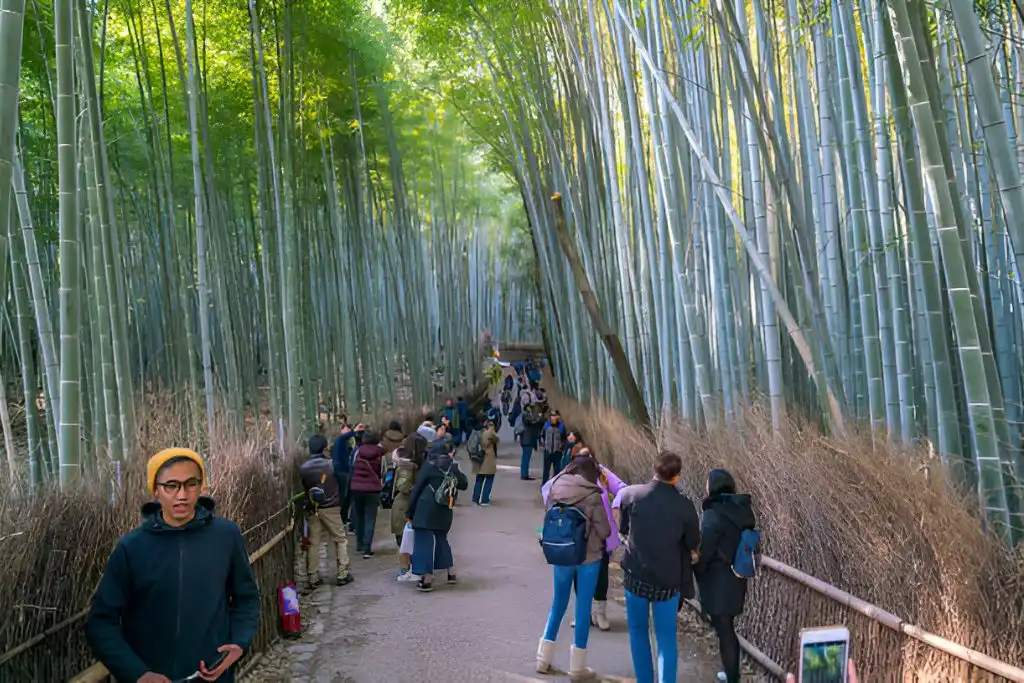
Photography Tips
The Arashiyama bamboo grove offers stunning photo opportunities. Here are some tips for capturing its beauty:
- Use a wide-angle lens to capture the towering scale of the bamboo
- Try shooting upwards to emphasize height and create interesting patterns
- Visit early morning for softer light and fewer people in shots
- Incorporate the path into compositions for leading lines
- Experiment with slow shutter speeds to blur swaying bamboo
- Look for spots where light filters through gaps in the bamboo
Tripods are allowed, but be mindful of other visitors when setting up equipment. Drones are not permitted in the grove.
Nearby Attractions In Arashiyama
Arashiyama offers many stunning sights beyond its famous bamboo forest. Visitors can enjoy scenic parks, historic temples, and unique wildlife experiences. The area’s natural beauty and cultural landmarks make it a must-see destination in Kyoto.
Iwatayama Monkey Park
Iwatayama Monkey Park sits atop Mount Arashiyama. It’s home to over 120 Japanese macaque monkeys. Visitors can climb the mountain for about 30 minutes to reach the park. At the top, people can feed the monkeys from inside a cage-like building. The monkeys roam freely outside. This setup keeps both humans and animals safe. The park also offers amazing views of Kyoto. On clear days, you can see the city spread out below. It’s a great spot for photos of both monkeys and scenery.
Kameyama-kōen Park
Kameyama-kōen Park is a peaceful green space in Arashiyama. It’s less crowded than some other attractions. The park is known for its beautiful cherry blossoms in spring. Visitors can enjoy walking trails through the woods. These paths offer views of the Katsura River. In fall, the park’s maple trees turn bright red and orange. The park was once part of a noble’s villa. Today, it’s open to the public. It’s a nice spot for a quiet break from busier tourist areas.
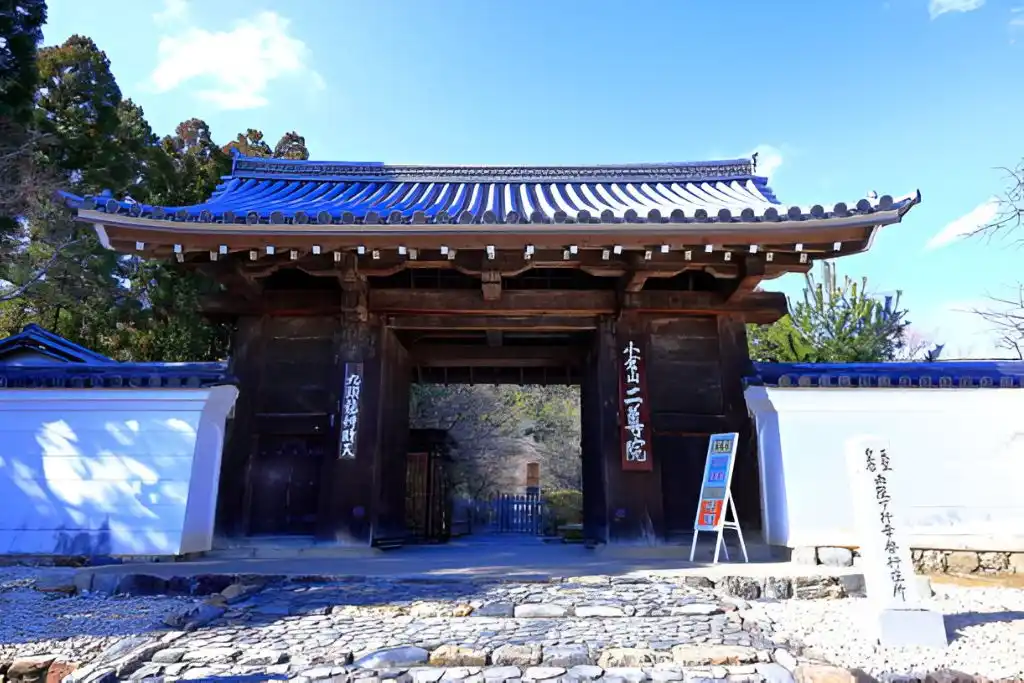
Tenryu-ji Temple
Tenryu-ji is Arashiyama’s most important temple. It’s a UNESCO World Heritage site. The temple was built in 1339 and is the head temple of the Rinzai Zen sect. Its gardens are famous for their beauty. They were designed by a master landscape artist. The gardens use the nearby mountains as “borrowed scenery.” Visitors can explore the main hall and other buildings. The temple also offers Zen meditation classes. These give a taste of traditional Buddhist practices. For those interested in exploring more iconic temples, a visit to Kinkakuji Temple is highly recommended, as it offers its own stunning architectural and natural beauty.
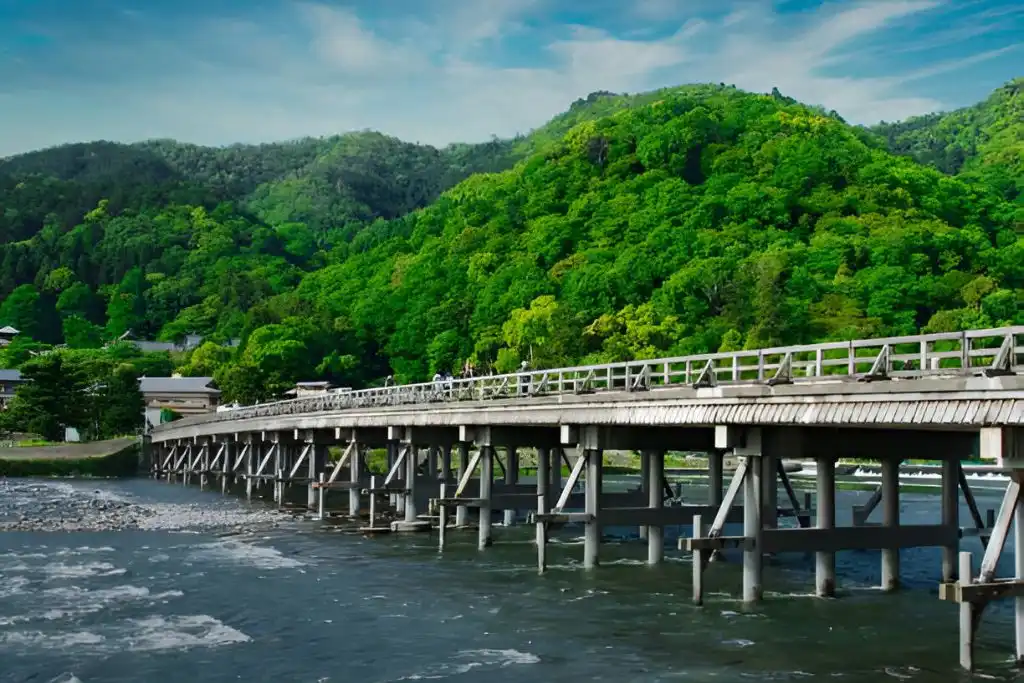
Togetsukyo Bridge
Togetsukyo Bridge is a symbol of Arashiyama. It spans the Katsura River. The name means “Moon Crossing Bridge” in English. The bridge offers great views of the surrounding mountains. It’s especially beautiful during cherry blossom season and fall foliage. Visitors can take boat rides from near the bridge. These tours show off Arashiyama’s scenery from the water. Rickshaw tours also start near the bridge. They’re a fun way to see the area. The bridge area is lively, with many shops and restaurants nearby. It’s a central point for exploring Arashiyama.
Cultural And Historical Significance Of Arashiyama Bamboo Forest
The Arashiyama Bamboo Forest holds deep cultural and historical importance in Japan. It represents nature’s beauty and strength while connecting to ancient traditions and beliefs.
The Role Of Bamboo In Japanese Art And Traditions
Bamboo has played a key part in Japanese art for centuries. Artists use it to make traditional crafts like baskets, tea ceremony tools, and musical instruments. The straight, hollow stems inspire calligraphy and painting styles. In architecture, bamboo creates screens, fences, and garden elements. Its flexibility and strength make it ideal for buildings that must withstand earthquakes and typhoons. Bamboo also features in many Japanese festivals and ceremonies. The forest itself serves as a backdrop for cultural events. People visit to experience the unique atmosphere and connect with nature. It offers a peaceful space for meditation and reflection, aligning with Japanese spiritual practices.
Symbolism Of Bamboo In Japanese Culture
Bamboo holds powerful meaning in Japan. It stands for strength, flexibility, and resilience. The plant bends in strong winds but doesn’t break, teaching people to adapt to life’s challenges. In Buddhist traditions, bamboo represents emptiness and openness to spiritual growth. Its hollow stem reminds people to empty their minds during meditation. The plant’s quick growth symbolizes prosperity and good fortune. Bamboo also links to the idea of nobility in Japanese culture. Its straight growth represents integrity and moral uprightness. The green color stands for purity and freshness, inspiring people to live with a clear and focused mind.
Local Legends Or Stories
Many tales surround the Arashiyama Bamboo Forest. One legend says a powerful dragon guards the area, bringing good luck to respectful visitors. Another story tells of a princess who hid in the forest to escape an unwanted marriage, protected by the spirits of the bamboo. Some believe the forest is home to small bamboo spirits called “kodama”. These playful beings are said to echo sounds in the forest, creating a magical atmosphere. Locals warn visitors to be respectful, as disturbing the kodama might bring bad luck. The forest’s beauty has inspired countless poems and paintings over the centuries. Artists often depict it as a place where the human and spirit worlds meet, adding to its mystical reputation.
Arashiyama Ryokans And Where To Stay
Arashiyama offers a range of traditional Japanese accommodations known as ryokans. These unique lodgings provide guests with an authentic cultural experience and a peaceful retreat after exploring the bamboo forest.
The Experience Of Staying In A Traditional Japanese Ryokan
Ryokans in Arashiyama offer traditional hospitality with futon bedding on tatami mats, yukata robes, and communal onsen baths. Guests enjoy multi-course kaiseki meals in their rooms, served by attentive staff. The atmosphere is serene, with minimalist decor and garden views. Some ryokans have private outdoor baths with river or mountain views.
Top Ryokans In The Area
- Arashiyama Benkei: A high-end ryokan with indoor and outdoor hot springs, offering beautiful river views.
- Kadensho Arashiyama Onsen: A 5-star luxury ryokan with spacious rooms and excellent service.
- Rangetsu: A mix of traditional and modern comforts, located near Togetsukyo Bridge, perfect for sightseeing.
These ryokans fill up quickly, especially during cherry blossom season, so early booking is recommended.
Budget-Friendly Accommodation Options
Budget-friendly options include smaller family-run ryokans, guesthouses, and hostels catering to backpackers. Some temples offer simple lodging called shukubo, which includes basic rooms and vegetarian meals. Staying in the nearby Uzumasa district can also reduce costs while keeping easy access to Arashiyama by train. For those seeking affordable travel experiences, you might consider looking into options like One Day in Flåm for a unique yet budget-conscious adventure.
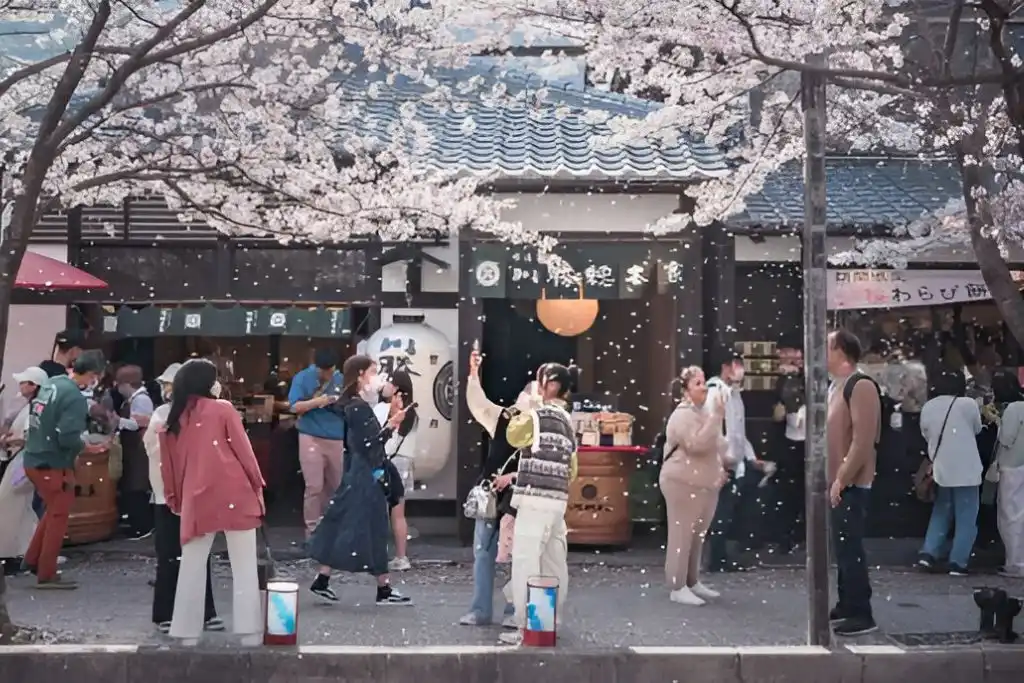
Temples And Shrines Around Arashiyama
Arashiyama boasts several notable temples and shrines. Tenryu-ji Temple stands out as a key attraction. Built in 1339, it’s a UNESCO World Heritage site. The temple grounds feature stunning gardens. Visitors can admire the beautiful landscape and zen rock gardens. Inside, impressive dragon paintings adorn the ceiling. Jojakko-ji Temple sits hidden in the mountains. It offers a quieter experience away from crowds. The temple grounds have lovely maple trees, perfect for autumn viewing. Nison-in Temple is known for its impressive gardens. In fall, the changing leaves create a breathtaking scene. The temple also houses important historical artifacts.
Hogonin Temple provides a peaceful retreat. Its gardens are carefully maintained and offer a serene atmosphere. Visitors can enjoy the beauty of nature in all seasons here. These temples showcase Kyoto’s rich cultural heritage. Each offers unique experiences, from art to architecture to natural beauty. Exploring these sites gives insight into Japanese history and spirituality.
Dining And Food Experiences In Arashiyama
Arashiyama offers a variety of dining options that cater to different tastes and budgets. Visitors can enjoy traditional Kyoto cuisine, try local street food, or dine at top-rated restaurants with stunning views.
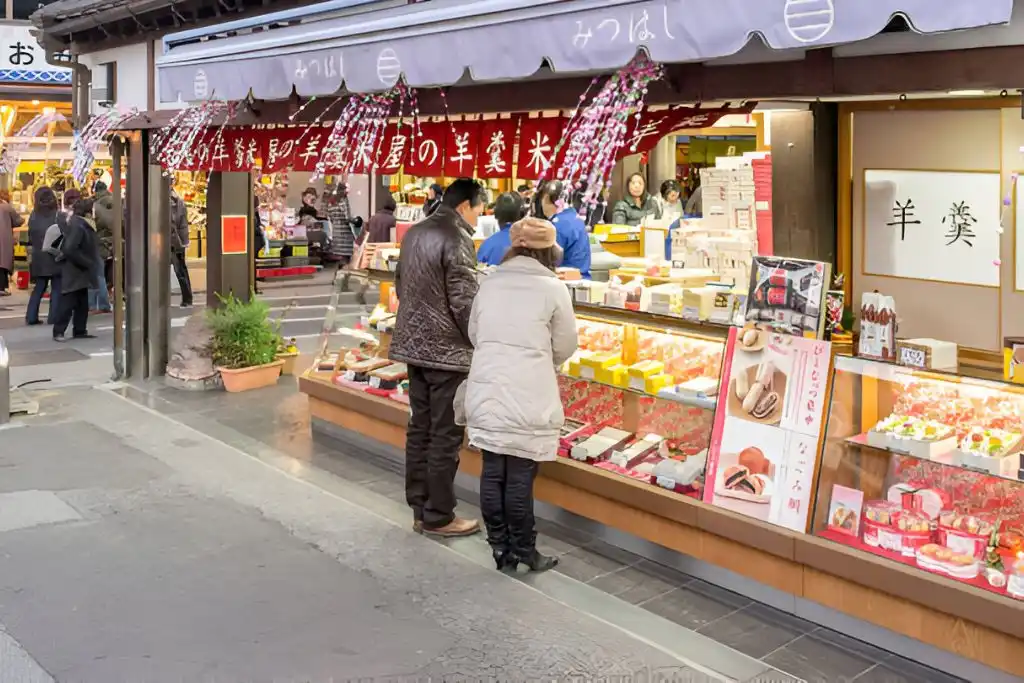
Best Places To Eat
Arashiyama’s culinary scene features a mix of high-end and casual dining options. Unagi Hirokawa, a Michelin-starred restaurant, specializes in grilled eel dishes. Reservations are highly recommended to avoid long wait times. For a more relaxed meal, Arashiyama Curry serves delicious Japanese-style curry rice. It’s a great option for a quick and satisfying lunch after exploring the bamboo forest. Visitors looking for scenic dining can try one of the restaurants overlooking the Katsura River. These establishments often offer set menus featuring seasonal ingredients and traditional cooking methods.
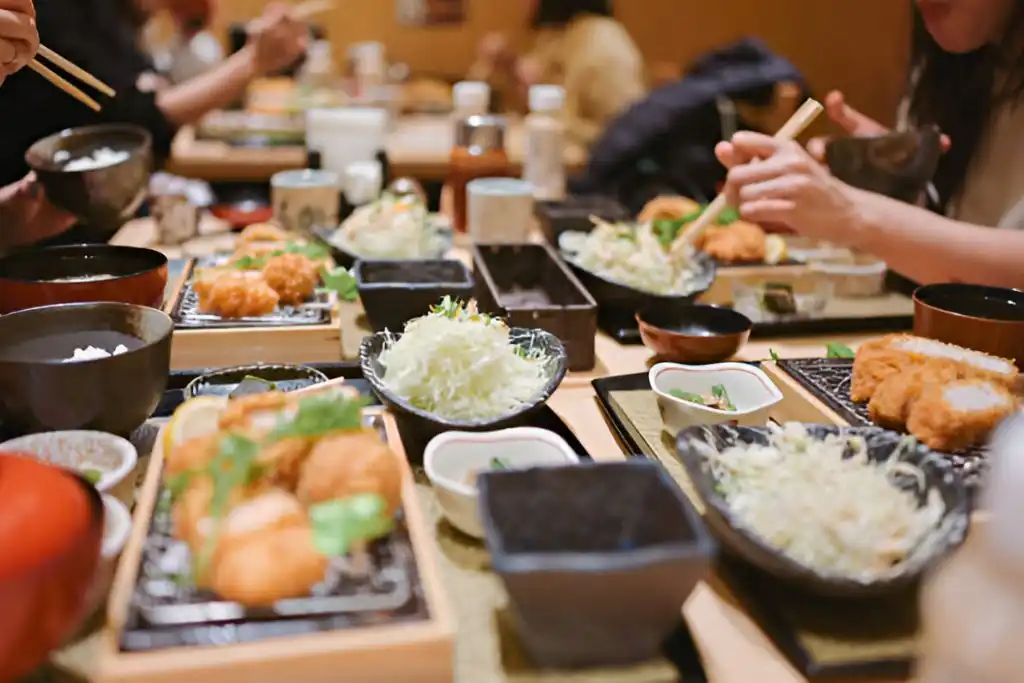
Traditional Kyoto Cuisine
Kyoto’s culinary traditions are well-represented in Arashiyama. Many restaurants serve kaiseki, a multi-course meal that showcases local and seasonal ingredients. Tofu dishes are a staple of Kyoto cuisine. Visitors can try yudofu (boiled tofu) or yuba (tofu skin) at specialized restaurants in the area. Another local specialty is Kyoto-style soba noodles. These buckwheat noodles are often served cold with a dipping sauce or in hot broth. Vegetarian and vegan options are also available, with some restaurants offering shojin ryori, a type of Buddhist vegetarian cuisine.
Must-Try Street Food
Arashiyama’s main street is lined with food stalls and small shops selling local snacks and treats. Dango, sweet rice dumplings served on skewers, are a popular street food. They come in various flavors, including matcha and sakura. Visitors can also try taiyaki, a fish-shaped waffle filled with sweet red bean paste or custard. Some shops offer unique flavors like matcha or chocolate. For a savory option, try freshly grilled yakitori (skewered chicken) or takoyaki (octopus balls). These make for a quick and tasty snack while exploring the area.
Sustainable Tourism In Arashiyama Bamboo Forest
The Arashiyama Bamboo Forest faces challenges from high visitor numbers. Steps are being taken to protect this natural wonder while allowing people to enjoy it. Visitors can help by following guidelines and supporting local efforts.
Conservation Efforts
The Arashiyama district limits daily visitors to protect the bamboo grove. Clear paths guide visitors, and regular maintenance trims damaged bamboo and removes litter. Experts monitor the forest’s health, replanting when necessary to keep it thriving.
Responsible Tourism Tips
Help protect the forest by staying on marked paths and avoiding bamboo souvenirs. Visit during off-peak times to reduce crowds, use public transport, and support eco-friendly local businesses and guides.
Initiatives For Protecting The Natural Beauty
Nighttime light displays showcase the bamboo without harming wildlife. A visitor center educates on bamboo forests and conservation, while local artists create works inspired by the forest, using bamboo from maintenance efforts.
Tips For Visiting Arashiyama Bamboo Forest
The Arashiyama Bamboo Forest is a popular spot that needs some planning. Visitors should think about timing, what to bring, and how to get around.
The Best Time Of Day To Visit
Early morning is the best time to visit Arashiyama Bamboo Forest. The grove is less crowded, and the light is perfect for photos. Sunrise to 9 AM is ideal for a peaceful walk. Weekdays are less busy than weekends. In fall and spring, the forest is extra beautiful. These seasons bring mild weather and colorful surroundings. The bamboo forest is open 24/7. Night visits offer a unique, magical experience. The lit-up bamboo creates a special atmosphere.
What To Pack And Wear
Comfortable walking shoes are a must. The paths can be uneven, so sturdy footwear helps. In summer, light, breathable clothes work best. Winters can be chilly, so layers are smart. A water bottle is important, especially on hot days. Snacks can be handy, as food options may be limited in the forest itself. Bringing a camera is a good idea. The tall bamboo makes for great photos. A wide-angle lens can capture more of the towering stalks.
Accessibility Options
The main path through the bamboo forest is flat and wide. This makes it good for wheelchairs and strollers. Some side paths may be narrower or have steps. Arashiyama cycling tours are a fun way to see the area. Bike rentals are available nearby. This option lets visitors cover more ground quickly. For those with mobility issues, rickshaws offer a traditional way to see the sights. Drivers can provide information about the area during the ride.
Arashiyama Bamboo Forest Through The Seasons
The Arashiyama Bamboo Forest offers a different experience in each season. The changing weather and light conditions create unique atmospheres throughout the year.
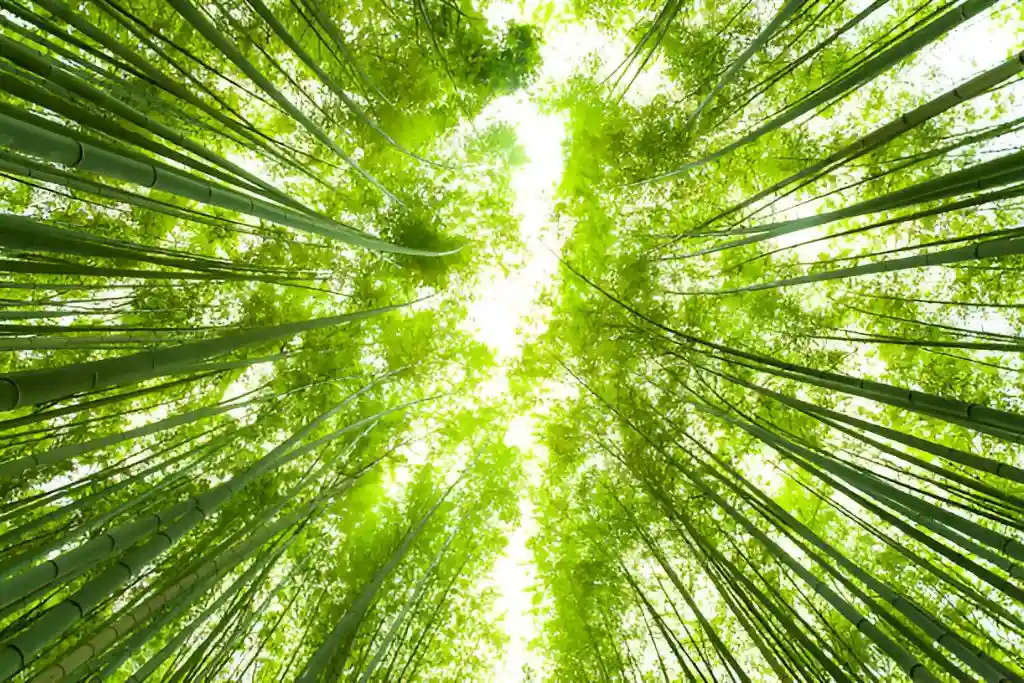
Spring
Spring brings fresh energy to the bamboo forest, with new shoots and vibrant green hues. Cherry blossoms bloom nearby, adding to the area’s beauty. The mild weather and dappled sunlight create a magical atmosphere, perfect for walks and photography.
Summer
In summer, the bamboo forest offers a cool escape from the heat, with its dense canopy providing shade. The vibrant green bamboo is at its peak. Early mornings are ideal for peaceful walks and photography, with softer light and fewer visitors.
Autumn
Autumn transforms the surrounding trees with red, orange, and yellow hues, while the bamboo remains green. The contrast creates stunning views, with crisp air and clear skies enhancing the forest’s beauty.
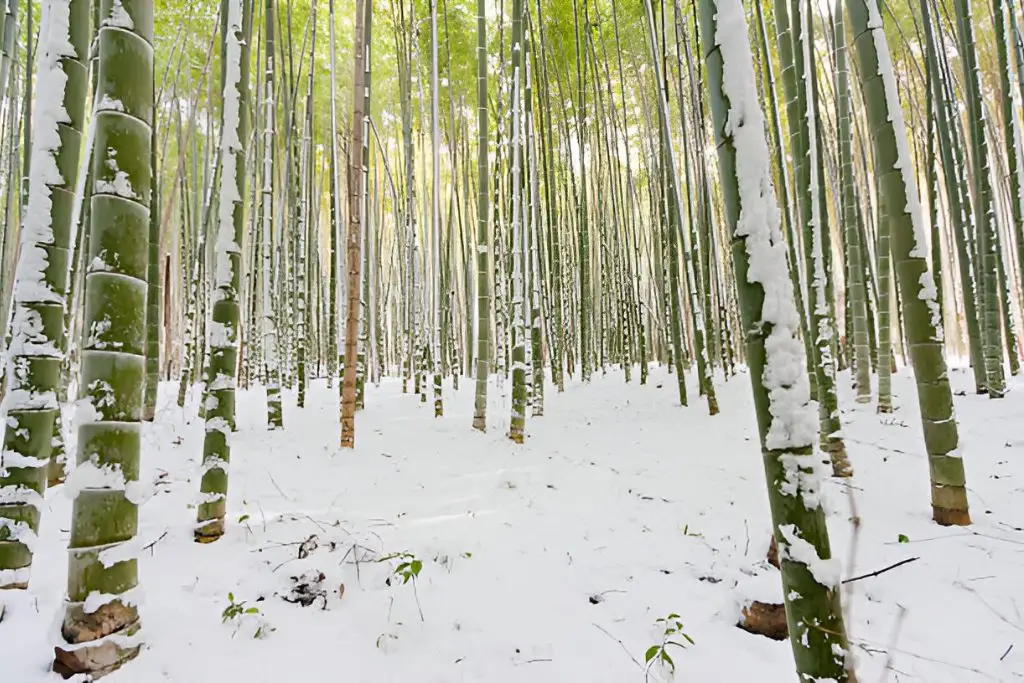
Winter
Winter brings a peaceful atmosphere to the bamboo forest, with fewer visitors and occasional frost or snow. The green bamboo contrasts beautifully with the white snow, offering a unique winter wonderland experience.
The Allure Of Japan’s Bamboo Landscapes
Japan’s bamboo groves captivate with their serene beauty, as tall stalks sway in the breeze. In Japanese culture, bamboo symbolizes strength, flexibility, and resilience, often featured in art and poetry. Bamboo groves vary in size, but Kyoto’s Arashiyama Bamboo Grove is particularly striking with its towering stalks forming a natural, sky-reaching tunnel.
Visitors to Arashiyama can:
- Walk along winding paths through the bamboo
- Listen to the unique rustling sound of bamboo leaves
- Feel dwarfed by the incredible height of the stalks
- Capture stunning photos in the dappled sunlight
The bamboo forest offers a peaceful retreat from the city, allowing visitors to connect with nature and find calm. Japanese gardens often use bamboo in fences, water features, and accents to bring its serenity into smaller spaces. Bamboo’s fast growth and versatility also make it an eco-friendly resource, used in many practical applications, adding to its cultural importance.
Frequently Asked Questions
What are the entrance fees and ticket prices for visiting Arashiyama Bamboo Grove?
The Arashiyama Bamboo Grove is free to enter. There are no ticket prices or entrance fees required to walk through the bamboo forest. This makes it an affordable option for travelers exploring Kyoto.
Could you detail the history and significance of Arashiyama Bamboo Forest?
The Arashiyama Bamboo Forest has been a symbol of Japanese natural beauty for centuries. It represents tranquility and harmony with nature in Japanese culture. The forest has been carefully maintained over generations. It serves as a living example of Japan’s dedication to preserving its natural landscapes.
Where is Arashiyama Bamboo Grove located and how can I get there?
Arashiyama Bamboo Grove is located in the Arashiyama district of Kyoto, Japan. Visitors can reach the forest by train, bus, or on foot. The easiest way is to take a train to Arashiyama Station. From there, it’s a short walk to the bamboo grove entrance.
What are the opening hours of Arashiyama Bamboo Forest?
The Arashiyama Bamboo Forest is open 24 hours a day, 7 days a week. There are no set opening or closing times. Visitors can enjoy the forest at any time of day or night. Early morning or late evening visits often provide a quieter experience with fewer crowds.
Are there any hiking trails within Arashiyama Bamboo Grove, and if so, what are they like?
The main path through Arashiyama Bamboo Grove is a 400-meter-long pedestrian walkway. It’s a gentle, flat trail suitable for all fitness levels. While not a challenging hike, the path offers a serene walk through towering bamboo. Visitors can enjoy the unique atmosphere and photo opportunities along the way.
Is there a difference between Sagano Bamboo Forest and Arashiyama Bamboo Forest?
Sagano Bamboo Forest and Arashiyama Bamboo Forest refer to the same place. These names are often used interchangeably by visitors and locals. The forest is located in the Arashiyama district, which is part of the larger Sagano area of Kyoto. Both names accurately describe this famous bamboo grove.

